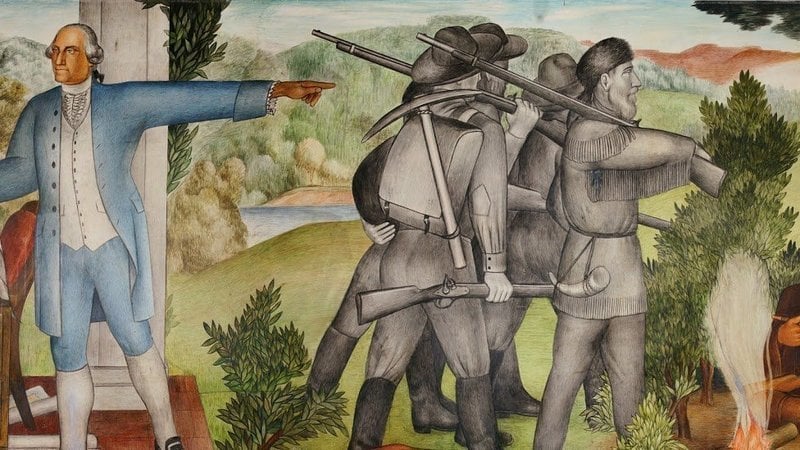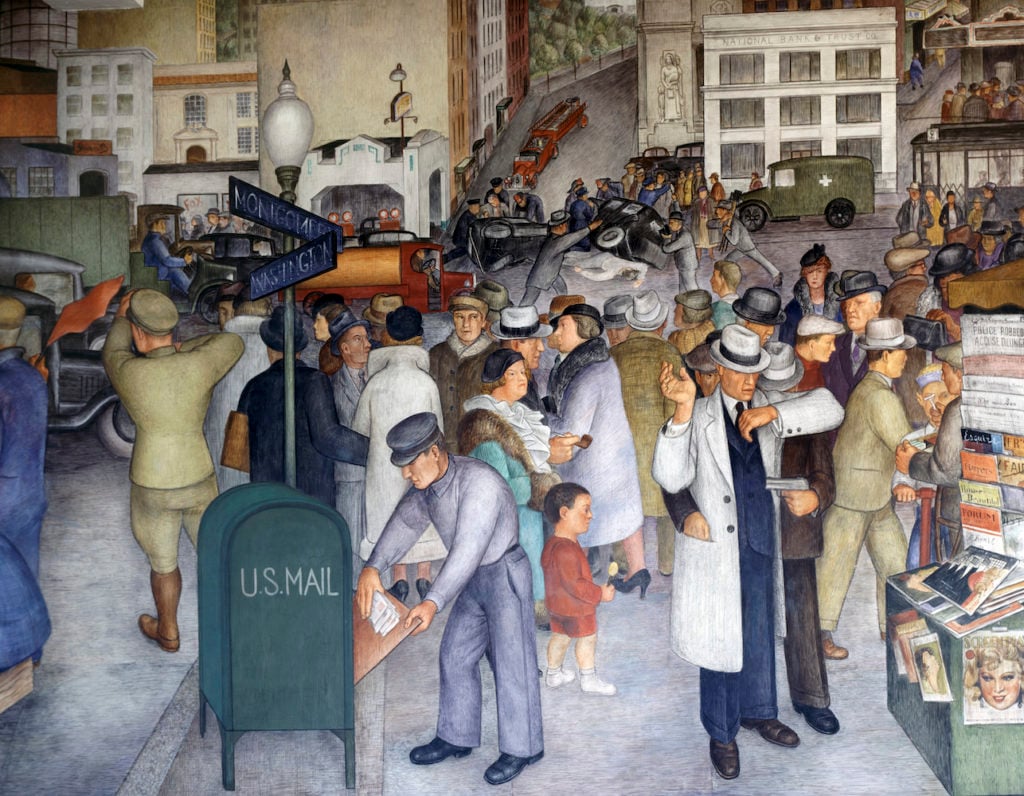Politics
After Years of Debate, San Francisco Votes to Cover Up Controversial 1930s Mural Depicting George Washington as a Slaveowner
Covering up the mural could cost taxpayers as much as $845,000.

Covering up the mural could cost taxpayers as much as $845,000.

Taylor Dafoe

For decades, a series of murals illustrating the life of George Washington on the walls of a San Francisco high school has been the subject of heated debate. Some say the 13-panel painting, which depicts violence against Native Americans and slaves, should be taken down. Others believe the work of art, which was painted nearly 90 years ago by Russian-born artist Victor Arnautoff—a noted critic of the whitewashing of American history—is an invaluable teaching tool.
Last week, the city finally settled the issue. The San Francisco Board of Education voted unanimously to cover up the murals at George Washington High School—a project that will cost as much as $845,000 in taxpayer money. Not everyone is pleased with the decision.
“There’s been this whole discussion about whitewashing history as if a mural is the only way to talk about history, or as if that history is an accurate depiction of the full experiences of people of that time,” Stevon Cook, the president of the school board, told the New York Times. “I think that argument really limits the nuances in how dynamic that time was and all the contributions African slaves made to the country, that indigenous Americans gave to settlers. To think that those two depictions are it is baffling.”
The school’s alumni association disagrees. “This is a radical and critical work of art,” the association argued. “There are many New Deal murals depicting the founding of our country; very few even acknowledge slavery or the Native genocide. The Arnautoff murals should be preserved for their artistic, historical and educational value. Whitewashing them will simply result in another ‘whitewash’ of the full truth about American history.”

Detail of City Life (1934) by Victor Arnautoff Located in the Coit Tower in San Francisco. Photo: VCG Wilson/Corbis via Getty Images.
Born and raised in Russia, Arnautoff moved to the Bay Area to study at what is now called the San Francisco Art Institute. He painted the mural, titled “The Life of George Washington,” in the 1930s—one of more than a dozen such public works he completed during the decade as part of FDR’s Works Progress Administration initiative. The first president’s rise to power is shown across 13 frescoes, including one that depicts slaves working on Washington’s property and white men stepping past the body of a slain Native American.
The debate over the Washington murals has stirred up bigger questions about how to approach depictions of dark historic events, especially within educational institutions. Should these images be preserved to learn from, or removed so as not to be venerated? What’s more, does it help or hurt students to witness challenging material that may make them uncomfortable in the classroom? Similar disputes have cropped up in recent years at a Los Angeles school complex, the University of Notre Dame, and Indiana University.
Earlier this spring, a “Reflection and Action Group” assembled by the San Francisco Unified School District declared that Arnautoff’s art glorifies “slavery, genocide, colonization, manifest destiny, [and] white supremacy.” Not long afterward, the Russian Community Council of the United States created an online petition in support of the mural. To date, 1,685 have signed.
This particular case has attracted the attention of New York Times columnist Bari Weiss, who deemed it emblematic of the sensitivities that characterize our cultural moment. “The implications of this logic are chilling. What happens when a student suggests that looking at photographs of the My Lai massacre in history class is too traumatic?” she wrote. “Should newspapers avoid printing upsetting images that illuminate the crisis at the border, like the unforgettable one of Óscar Alberto Martínez Ramírez and his 23-month-old daughter, Valeria, facedown, drowned in the Rio Grande?”
The school board still has to decide whether it will paint over the mural or cover it with paneling. The latter option would cost between $600,000 and $845,000 and would be completed within two years, according to the Times. Painting, while ostensibly cheaper, would first necessitate an environmental impact study, which would run roughly $500,000. The timeline for this option is unclear.